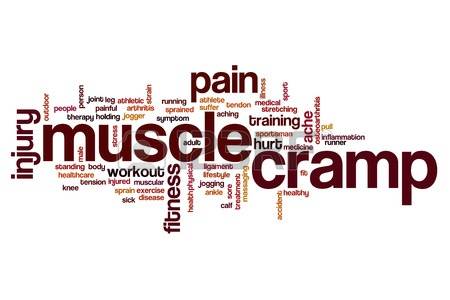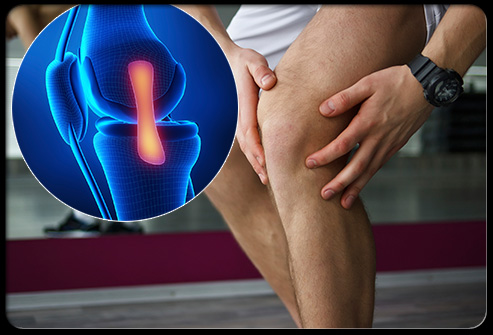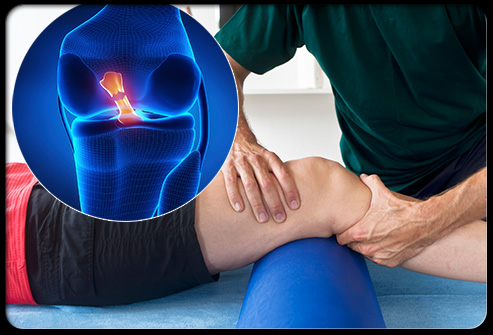
Contents
First aid -Muscle cramps
What are muscle cramps?![]()
A muscle cramp is a strong, painful contraction or tightening of a muscle that comes on suddenly and lasts from a few seconds to several minutes. It often occurs in the legs. A muscle cramp is also called a Charley horse.
Nighttime leg cramps are usually sudden spasms, or tightening, of muscles in the calf. The muscle cramps can sometimes happen in the thigh or the foot. They often occur just as you are falling asleep or waking up.
What causes muscle cramps?
The cause of muscle cramps isn’t always known. Muscle cramps may be brought on by many conditions or activities, such as:
- Exercising, injury, or overuse of muscles.
- Pregnancy. Cramps may occur because of decreased amounts of minerals, such as calcium and magnesium, especially in the later months of pregnancy.
- Exposure to cold temperatures, especially to cold water.
- Other medical conditions, such as blood flow problems (peripheral arterial disease), kidney disease, thyroid disease, and multiple sclerosis.
- Standing on a hard surface for a long time, sitting for a long time, or putting your legs in awkward positions while you sleep.
- Not having enough potassium, calcium, and other minerals in your blood.
- Being dehydrated, which means that your body has lost too much fluid.
- Taking certain medicines, such as anti psychotics, birth control pills, diuretics, stains, and steroids.
Types of cramps
1) Tetany
In tetany, all of the nerve cells in the body are activated, which then stimulate the muscles. This reaction causes spasms or cramps throughout the body.
Sometimes, tetanic cramps are indistinguishable from “true” cramps. The accompanying changes of sensation or other nerve functions that occurs with tetany may not be apparent because the cramp pain is masking or distracting from it.
The muscle cramps caused by the disease tetanus are due to a blocking of the inhibition to the neurons that supply muscles and are not classified as tetany.
The most common cause of tetany is lack of calcium. Low ionic calcium can be hidden in blood tests. Symptoms could be an arm cramp, while numbness and tingling occurs around the mouth or other areas of the body. The ability to swallow may also be impaired as the larynx goes into spasm. Tetany is sometimes impossible to tell from true cramps since tingling can be masked by pain and anxiety.
An excess of phosphate (high phosphate-to-calcium ratio) can also trigger the spasms. As well as the under function of the parathyroid gland and it is possible that low levels of carbon dioxide, most commonly caused by hyperventilation, causes tetany by altering the albumin binding of calcium such that the ionised (physiologically influencing) fraction of calcium is reduced.
Signs
- Hyperreflexia – overactive neurological reflexes.
- Carpopedal spasm – spasms of the hands and feet.
- Cramps.
- Laryngospasm – spasm of the larynx, the voice box.
2) Dystonic cramps – are when the opposite muscle groups to that needed contract. Examples include the jaw eyelids and larynx.
The final category is dystonic cramps, in which muscles that are not needed for the intended movement are stimulated to contract. Muscles that are affected by this type of cramping include those that ordinarily work in the opposite direction of the intended movement, and/or others that exaggerate the movement. Some dystonic cramps usually affect small groups of muscles (eyelids, jaws, neck, larynx, etc.). The hands and arms may be affected during the performance of repetitive activities such as those associated with handwriting (writer’s cramp), typing, playing certain musical instruments, and many others. Each of these repetitive activities may also produce true cramps from muscle fatigue. Dystonic cramps are not as common as true cramps.
3) Contractures – muscles can’t relax due to lack of ATP. This can occur with no muscle activity be inherited or acquired.
A contracture is a scarring of the soft tissues that muscle movements normally affect. When a contracture is present, the tissue that is involved cannot move completely,whether the corresponding muscle is activated or relaxed. This is because the scarred tissue cannot move in response to muscle movements. This leads to a fixed body part with loss of full range of motion. The most common type of contracture occurs in the palm of the hand and affects the tendons that normally cause the fingers to close with gripping. Most commonly, this form of contracture affects the ring finger.
How can you stop a muscle cramp when it happens:
You may need to try several different ways to stop a muscle cramp before you find what works best for you. Here are some things you can try:
- Stretch and massage the muscle.
- Take a warm shower or bath to relax the muscle. A heating pad placed on the muscle can also help.
- Try using an ice or cold pack. Always keep a cloth between your skin and the ice pack.
- Take an over-the-counter pain medicine, such as acetaminophen (Tylenol), ibuprofen (Advil, Motrin), or naproxen (Aleve). Read and follow all instructions on the label.
- If your doctor prescribes medicines for muscle cramps, take them exactly as prescribed. Call your doctor if you have any problems with your medicine.
- Drink plenty of fluids. Sports drinks, such as Gatorade, will often help leg cramps.
Here are some things you can try for a leg cramp:
- Walk around, or jiggle your leg.
- Stretch your calf muscles. You can do this stretch while you sit or stand:
- While sitting, straighten your leg and flex your foot up toward your knee. It may help to place a rolled towel under the ball of your foot and, while holding the towel at both ends, gently pull the towel toward you while keeping your knee straight.
- While standing about 2 ft (0.6 m) from a wall, lean forward against the wall. Keep the knee of the affected leg straight and the heel on the ground. Do this while you bend the knee of the other leg. See a picture of how to do this calf stretch.
Can medications cause muscle cramps?
Numerous medicines can cause cramps. Potent diuretic medications, such as furosemide (Lasix), or the vigorous removal of body fluids, even with less potent diuretics, can induce cramps by depleting body fluid and sodium. Simultaneously, diuretics often cause the loss of potassium, calcium, and magnesium, which can also cause cramps.
Some medicines used to lower cholesterol, such as lovastatin (Mevacor), can also lead to cramps. Cramps are sometimes noted in addicted individuals during withdrawal from medications and substances that have sedative effects, including alcohol, barbiturates and other sedatives, anti-anxiety agents such as benzodiazepines (for example, diazepam [Valium] and alprazolam [Xanax]), narcotics, and other drugs.
Can vitamin deficiencies cause muscle cramps?
Several vitamin deficiency states may directly or indirectly lead to muscle cramps. These include deficiencies of thiamine (B1), pantothenic acid (B5), and pyridoxine (B6). The precise role of deficiency of these vitamins in causing cramps is unknown.
Muscle Cramps Symptom:
Characteristically, a cramp is painful, often severely so. Usually, the sufferer must stop whateveractivity is under way and seek relief from the cramp; the person is unable to use the affected muscle while it is cramping. Severe cramps may be associated with soreness and swelling, which can occasionally persist up to several days after the cramp has subsided. At the time of cramping, the knotted muscle will bulge, feel very firm, and may be tender.
There are no special tests for cramps. Nevertheless, the diagnosis of muscle cramps is relatively easy. Most people know what cramps are and when they have one. If present during a cramp, the doctor, or any other bystander, can feel the tense, firm bulge of the cramped muscle.
Muscle cramps cause the following:
- Local pain
- Tenderness
- Firmness of the involved muscle
This disturbs the function of the involved extremity. When a hand muscle is affected, it can lead to difficulty in writing (writer’s cramp) or grasping. When the muscles of the calf or foot are affected, it can lead to difficulty walking.
What is the treatment of skeletal muscle cramps?

Most cramps can be stopped if the muscle can be stretched. For many cramps of the feet and legs, this stretching can often be accomplished by standing up and walking around. For a calf muscle cramp, the person can stand about 2 to 2.5 feet from a wall (possibly farther for a tall person) and lean into the wall to place the forearms against the wall with the knees and back straight and the heels in contact with the floor. (It is best to learn this maneuver at a time when you don’t have the cramp.) Another technique involves flexing the ankle by pulling the toes up toward the head while still lying in bed with the leg as straight as possible. For writer’s cramp (contractual in the hand), pressing the hand on a wall with the fingers facing down will stretch the cramping finger flexor muscles.
Gently massaging the muscle will often help it to relax, as will applying warmth from a heating pad or hot soak. If the cramp is associated with fluid loss, as is often the case with vigorous physical activity, fluid and electrolyte (especially sodium and potassium) replacement is essential. Medicines generally are not needed to treat an ordinary cramp that is active since most cramps subside spontaneously before enough medicine would be absorbed to even have an effect.
Tips:
- Stay hydrated, especially if the weather is warm.
- Warm up and stretch before exercising, making sure to stretch your sides.
- Breathe deeply and evenly while exercising.
- Eat Bananas before you exercise, the potassium will keep you from cramping up.
- Make sure there is enough potassium in your diet. Bananas and orange juice are among the good sources of potassium.
- Choose cooler times of day to exercise.
- Avoid exercising, especially swimming, for an hour or so after eating.
- For shin splints, ice the area. Take a painkiller like acetaminophen or ibuprofen. Take a couple of weeks off from high-impact exercise, then get back into exercising gradually.
- Focusing on your breathing helps to bring the cramp under control and it gives you something to think about besides the pain.
How can you prevent muscle cramps:
These tips may help prevent muscle cramps:
- Drink plenty of water and other fluids, enough so that your urine is light yellow or clear like water.
- Limit or avoid drinks with alcohol or caffeine. These can make you dehydrated, which means your body has lost too much fluid.
- Make sure you are eating healthy foods (especially if you are pregnant) that are rich in calcium, potassium, and magnesium.
- Ride a bike or stationary bike to condition and stretch your muscles.
- Stretch your muscles every day, especially before and after exercise and at bedtime.
- Don’t suddenly increase the amount of exercise you get. Increase your exercise a little each week.
- Take a daily multi vitamin supplement.
Muscle Cramps Treatment:
The primary treatment of muscle cramps involves methods to relax the affected muscle. This typically involves stretching, massage, and heat application. Other treatments are directed toward the underlying cause of the muscle cramps and can include re hydration, electrolyte repletion, hormone treatment, calcium supplementation, etc.
Self-Care at Home
- Most cramps can be stopped if the involved muscle can be stretched. For many cramps of the feet and legs, this stretching can often be accomplished by standing up and walking around. For a calf muscle cramp, the person can stand about 2-2½ feet from a wall (possibly farther for a tall person) and lean into the wall to place the forearms against the wall with the knees and back straight and the heels in contact with the floor.
- Another technique involves flexing the ankle by pulling the toes up toward the head while still lying in bed with the leg as straight as possible. For writer’s cramp (contractures in the hand), pressing the hand on a wall with the fingers facing down will stretch the cramping finger flexor muscles.
- Gently massaging the muscle will often help it to relax, as will applying warmth from a heating pad or hot soak. If the cramp is associated with fluid loss, as is often the case with vigorous physical activity, fluid and electrolyte (especially sodium and potassium) replacement is essential. Medicines are not generally needed to treat an ordinary cramp that is active since most cramps subside spontaneously before enough medicine would be absorbed to even have an effect.
First aid video for muscle cramp-1
First aid video for muscle cramp-2


